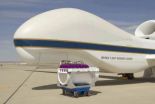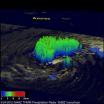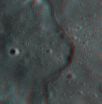(Press-News.org) Biologists at New York University have uncovered one way that biological clocks control neuronal activity — a discovery that sheds new light on sleep-wake cycles and offers potential new directions for research into therapies to address sleep disorders and jetlag.
"The findings answer a significant question — how biological clocks drive the activity of clock neurons, which, in turn, regulate behavioral rhythms," explained Justin Blau, an associate professor in NYU's Department of Biology and the study's senior author.
Their findings appear in the Journal of Biological Rhythms.
Scientists have known that our biological clocks control neuronal activity. But not previously understood is how this process occurs — that is, how does information from biological clocks drive rhythms in the electrical activity of pacemaker neurons that, in turn, drives daily rhythms?
To understand this mechanism, the researchers examined the biological, or circadian, clocks of Drosophila fruit flies, which are commonly used for research in this area. Earlier studies of "clock genes" in fruit flies allowed the identification of similarly functioning genes in humans.
In their study, the researchers focused on eight master pacemaker neurons located in the central brain — these neurons set the timing of the daily transitions between sleep and wake in the fly. Specifically, they were able to isolate these neurons from animals and identify sets of genes differentially expressed between dawn and dusk.
In a series of follow-up experiments, they concentrated on one gene, Ir, whose expression was found to be much higher at dusk than at dawn and much more highly expressed in pacemaker neurons than in the rest of the brain. Ir encodes a potassium channel that helps set the resting state of neurons – and so its rhythmic expression makes it an excellent candidate to help link the biological clock to pacemaker neuron activity. High levels of Ir expression at dusk should make it much harder for pacemaker neurons to signal than the low levels seen at dawn, a finding that fits with earlier studies showing that pacemaker neurons fire more at dawn than at dusk.
The authors also found that genetic manipulations that either increase or decrease Ir levels affect behavioral rhythms. Perhaps more interestingly, these were also associated with changes in the timing and strength of oscillations in the core clock.
"Biology is never as simple as we imagine it will be," explained Blau. "We were looking for an output of the biological clock that would link the core clock to neuronal activity. Ir seems to do this, but it also, remarkably, feeds back to regulate the core clock itself. Feedback loops seem to be deeply engrained into the biological clock and presumably help these clocks work so well."
###
The study's other co-authors were: Marc Ruben, a doctoral candidate; Mark Drapeau, a former postdoctoral researcher; and Dogukan Mizrak, a doctoral candidate. The study was funded by grants from the National Institutes of Health.
NYU biologists uncover dynamic between biological clock and neuronal activity
2012-09-26
ELSE PRESS RELEASES FROM THIS DATE:
Cryopreservation of induced pluripotent stem cells improved the most by one product
2012-09-26
Tampa, Fla. (Sep. 25, 2012) – In a study to determine the best cryopreservation (freezing) solution to maintain induced pluripotent stem (iPS) cells, a team of researchers from Japan compared 12 kinds of commercially prepared and readily available cryopreservation solutions and found that "Cell Banker 3" out-performed the other 11 solutions by allowing iPS cells to be preserved for a year at degrees C in an undifferentiated state.
The study is published in a recent special issue of Cell Medicine [3(1)], now freely available on-line at: http://www.ingentaconnect.com/content/cog/cm.
"iPS ...
Cutting-edge technology makes NASA's hurricane mission a reality
2012-09-26
Cutting-edge NASA technology has made this year's NASA Hurricane mission a reality. NASA and other scientists are currently flying a suite of state-of-the-art, autonomously operated instruments that are gathering difficult-to-obtain measurements of wind speeds, precipitation, and cloud structures in and around tropical storms.
"Making these measurements possible is the platform on which the instruments are flying," said Paul Newman, the deputy principal investigator of NASA's Hurricane and Severe Storm Sentinel (HS3), managed by NASA's Goddard Space Flight Center in Greenbelt, ...
October LITHOSPHERE delivered online
2012-09-26
Boulder, Colo., USA – The October issue of Lithosphere covers geology in Wyoming, USA; the California Coast Ranges, USA; the Alpine Fault, New Zealand; the South Atlantic seafloor; the central Himalaya in Nepal; and Sidekan, Kurdistan Region, Iraqi Zagros suture zone. Topics and methods include tectonics, orogeny, hazards, paleogeography, trigonometrics, multiple-point data analysis, LiDAR, oceanic isostasy, computer modeling, and spectroscopy.
Abstracts are online at http://lithosphere.gsapubs.org/content/current. Representatives of the media may obtain complimentary ...
NASA satellites see Tropical Storm Nadine 'refuse to go away'
2012-09-26
Nearly two weeks after becoming a tropical storm in the central Atlantic back on September 11th, NASA satellites confirm that Nadine is still spinning away south of the Azores as a minimal tropical storm. One of those satellites called TRMM has been providing forecasters with rainfall rates and cloud heights.
Nadine initially formed into a tropical depression from an African easterly wave that had propagated westward out into the central Atlantic from the coast of Africa. Nadine initially moved northwestward then northward before getting caught up in the westerlies over ...
Mouse pancreatic stem cells successfully differentiate into insulin producing cells
2012-09-26
Tampa, Fla. (Sep. 25, 2012) – In a study to investigate how transplanted islet cells can differentiate and mature into insulin-producing pancreatic cells, a team of Japanese researchers found that using a specific set of transcription factors (proteins that bind to specific DNA sequences) could be transduced into mouse pancreatic stem cells (mPSCs) using Sendai virus (SeV), a mouse influenza virus, as a carrier, or vector.
The study is published in a recent issue of Cell Medicine [3(1)], now freely available on-line at: http://www.ingentaconnect.com/content/cog/cm.
"Diabetes ...
NASA infrared data compares Super Typhoon Jelawat with Tropical Storm Ewiniar
2012-09-26
NASA's Aqua satellite has been obtaining infrared, visible and other data everytime it passes over Typhoon Jelawat and Tropical Storm Ewiniar in the western North Pacific, and a combination of two images from Aqua's AIRS satellite puts the storms in perspective.
A combined image created from infrared data obtained by the Atmospheric Infrared Sounder (AIRS) instrument that flies on NASA's Aqua satellite provides a comparison of the two monster storms in the western North Pacific Ocean basin . An infrared image of Typhoon Jelawat captured on Sept. 25 was combined with an ...
Category 2 Hurricane Miriam Seen in East Pacific by NASA satellite
2012-09-26
The MODIS instrument that flies aboard NASA's Aqua and Terra satellites provide some of the most clear and stunning imagery of tropical cyclones, and captured a visible image of Category 2 hurricane Miriam off the western coast of Mexico.
MODIS stands for the Moderate Resolution Imaging Spectroradiometer. Terra's MODIS and Aqua's MODIS view the entire Earth's surface every 1 to 2 days, acquiring data in 36 spectral bands, or groups of wavelengths. NASA's Aqua satellite flew over Hurricane Miriam on Sept. 24 at 21:00 UTC and the MODIS instrument captured a visible image ...
Hubble goes to the eXtreme to assemble farthest-ever view of the universe
2012-09-26
Like photographers assembling a portfolio of best shots, astronomers have assembled a new, improved portrait of mankind's deepest-ever view of the universe.
Called the eXtreme Deep Field, or XDF, the photo was assembled by combining 10 years of NASA Hubble Space Telescope photographs taken of a patch of sky at the center of the original Hubble Ultra Deep Field. The XDF is a small fraction of the angular diameter of the full moon.
The Hubble Ultra Deep Field is an image of a small area of space in the constellation Fornax, created using Hubble Space Telescope data from ...
Lunar Reconnaissance Orbiter explores the Moon in 3-D
2012-09-26
Scientists using the camera aboard NASA's Lunar Reconnaissance Orbiter are acquiring stereo images of the moon in high resolution (0.5 to 2 meters/pixel) that provide 3-D views of the surface from which high resolution topographic maps are made. The Lunar Reconnaissance Orbiter Camera Narrow Angle Camera (LROC NAC) team from the University of Arizona and Arizona State University are currently developing a processing system to automatically generate anaglyphs from most of these stereo pairs. An anaglyph is an image that can be viewed in 3-D using red-blue/green glasses.
LROC ...
Compelling evidence that brain parts evolve independently
2012-09-26
An Evolutionary Biologist at The University of Manchester, working with scientists in the United States, has found compelling evidence that parts of the brain can evolve independently from each other. It's hoped the findings will significantly advance our understanding of the brain.
The unique 15 year study with researchers at the University of Tennessee and Harvard Medical School also identified several genetic loci that control the size of different brain parts.
The aim of the research was to find out if different parts of the brain can respond independently of each ...




